Serendip is an independent site partnering with faculty at multiple colleges and universities around the world. Happy exploring!
Notes Toward Day 13: "The Hegemony of Normalcy"
Day 13: "The Hegemony of Normalcy"

I. Coursekeeping
--naming?
--mid-semester evaluations
only 1/2 of you replied; most of you that did gave out cakes and pie
(delicious! thanks...); might we hear from the other 1/2, please?
--reminder re: books-ordering (show-and-tell)
--also: attending outside events
4pm TODAY in Thomas 224: Monica Roberts, author of the blog Transgriot,
speaking about politics, racism, and queer identity
7:30 TONIGHT in Goodhart Theater: Suzan-Lori Parks reading
12:30-1:45 TOMORROW in Thomas 224: Sharon Mizota, "Revisiting Identity: Observations on Race and Contemporary Art" (talk for Center For Visual Culture)
THIS WEEKEND: Th Oct. 22, Fri Oct. 23 & Sat. Oct. 24:
Full schedule for Symposium on Comics and the Art of Social Transformation @ HC
(including writing workshop with Lynda Barry)
7:30-9:30 Th Oct. 22 in Sharpless Auditorium: Keynote Talk by Eric Drooker,
"Street Art and Graphic Novels"
Also, updates re: future class sessions
Nov. 5, 10-11:30 a.m: Open Conversation with Kate Bornstein in Quita Woodward: who can/will come?
4 p.m.: "Big Performance" @ Villanova: what about transportation?
Nov. 10: Howard Glasser will join us for the (first) conversation on masculinity.
Nov. 17: Felice Picano will join us; he's "keen on a chat and connecting with you,"
so feels that an "assignment" might take away from that. He simply you know
"who he is" so you'll have some context (in other words, it's your choice whether
or not to read his memoir of gay literary life, Art and Sex in Greenwich Village)
Nov. 24: I talked with Vicky Funari, director of Live Nude Girls Unite! Sadly, she can't join us for a class conversation, but she's delighted that we'll be viewing her film.
Next essay
Begin thinking/scribbling/daydreaming your way toward your next essay, due Friday October 30. I'm open to wide variation of form and function in the "bodies" of your papers; feel free to write a conventional academic essay or to experiment with different forms of storytelling, persuasion, and interpretation. As you begin to dream an essay, you might find the brief bibliography below helpful. This is only a beginning, and I'd be happy to point you toward more resources and to meet with you before or after you write this essay.
Selected Bibliography of Disability Studies Resources
II. Entering Crip World
"crip" as a reclaimed term, analogous to "queer"
"queering" and "cripping"
Deafness (capital D) as a cultural and linguistic identity
Visa Ad starring Crutchmaster (Bill Shannon)
"Need," by the Flying Words Project, Peter Cook and Kenny Lerner
"Disabled Country" by Neil Marcus
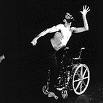 if there was a country called disabled
if there was a country called disabled
i would be from there. i'd live disabled
culture, eat disabled food, make disabled
love, cry disabled tears, climb disabled
mountains and tell disabled stories.
if there was a country called disabled
i would say she has immigrants that come
to her from as far back as time remembers.
if there was a country called disabled,
then i am one of its citizens.
i came there at age 8.
i tried to leave, was encouraged by
doctors to leave. i tried to
surgically remove myself from disabled
country but found myself, in the end,
staying and living there.
if there was a country called disabled,
i would always have to remind myself that
i came from there. i often want to for-
get. I would have to remember, to remember
in my life's journey i am making myself
at home in my country.
Disability Studies 101
the medical model vs. the social model
impairment vs. disability
People with disabilities are not only objects of study and curiosity but also creators of knowledge, culture, and art.
The study of disability as a category of analysis and identity is tied to disability rights activism and the independent living movement.
 |
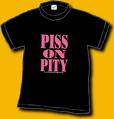 |
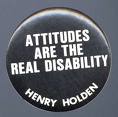 |
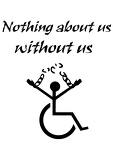 |
Where we're coming from:
Roughgarden: "I wondered where we might locate diversity in gender expression and sexual orientation within the overall framework of human diversity. Are these types of diversity as innocent as differences in height, weight, body proportion, and aptitude? Or does diversity in gender expression and sexuality merit special alarm and require careful treatment? (3, emphasis mine)
![]()
The worlds new tallest man Sultan Kosen 26, of Turkey poses in front of Tower Bridge to celebrate the launch of the 2010 Guinness Book of Records, on September 16, 2009 in London, England. Sultan Kosen stands at 8ft 1in and also holds the record for the largest hands and largest feet at 27.5cm and 36.5cm respectively.
Paul Grobstein: Roughgarden's stories about gender diversity:
- diversity is a problem, a failure to achieve the norm or "ideal" - it should be reduced
- diversity is a virtue, a necessity to be prepared for/create a constantly changing future - it should be encouraged
Sherry Ortner: "Because hegemonic American culture takes both the ideology of mobility and the ideology of individualism seriously, explanations for nonmobility not only focus on the failure of individuals (because they are said to be inherently lazy or stupid or whatever), but shift the domain of discourse to arenas that are taken to be "locked into" individuals--gender, race, and ethnic origin. ("Reading America" 26)
What about disability?
Where we're going:
Transcending gender
Masculinity
Sex work in the US and elsewhere
Experimenting with language and storytelling
III: Davis: Norms and Ideals
"the 'problem' is not the person with disabilities; the problem is the way that normalcy is constructed to create the 'problem' of the disabled person" (24)
"The concept of a norm, unlike that of an ideal, implies that the majority of the population must or should somehow be part of the norm. The norm pins down that majority of the population that falls under the arch of the standard bell-shaped curve. . . . Any bell curve will always have at its extremities those characterisitcs that deviate from the norm. So, with the concept of the norm comes the concept of deviations or extremes. When we think of bodies, in a society where the concept of the norm is operative, then people with disabilities will be thought of as deviants" (29) 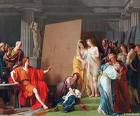 Francois-Andre Vincent, Zeuxis Choosng
Francois-Andre Vincent, Zeuxis Choosng
"If individual citizens are not fit, if they do not fit into the nation, then the national body will not be fit" (36).
"One of the tasks for a developing consciousness of disability issues is the attempt. . . to reverse the hegemony of the normal and to institute alternative ways of thinking about the abnormal" (Davis 49).
from science: survival of the fittest
from social science: statistical norms and their relation to eugenics
from humanities: the novel as a normalizing form
![]()
The idea of the normal shapes disciplines and curricula:
Abnormal Psychology
The Sociology of Deviance
Others?
ebock:
This idea of a perfectable body has seemed to resurface time and time again in different ways. We see it now on the covers of different tabloid-y magazines or something like Men's Health (I work in the bookstore at HC so when I restock the magazines I always notice how repetitive the magazines tend to be): ways to build muscle or lose weight or any number of things. So there's this idea of a "normal" body that isn't just normal. It's unhealthy. To make it even more complicated, the "normal" body is different by gender, race, class, etc., so the means and lengths that people seek out to achieve the "normal" body vary incredibly. Even then, it is assumed that these bodies are "normal" in terms of their ability: they can see, walk easily, hear, don't have any trouble reading, can stand or sit up straight, etc.
skindeep:
however, one thing i really liked was when he wrote (and i quote): 'the corpulent, lazy body of Verloc indicates his moral sleaziness' it brought back memories of my mother telling me to 'carry myself well' because it portrayed my character. and i guess the way you walk (back straight, looking up vs. slouching and dragging your feet on the groud) does affect the way someone would form an impression about you, but does that mean that body language is just something we've been conditioned to believe?
IV: Discussion Groups
Each group come up with five questions you want to ask (and perhaps to answer) about disability: one from the perspective of the natural sciences, one from the social sciences, one from the humanities, and two wild cards. These questions will help to shape our class discussions and may also help you to discover an issue you'd like to write about.


